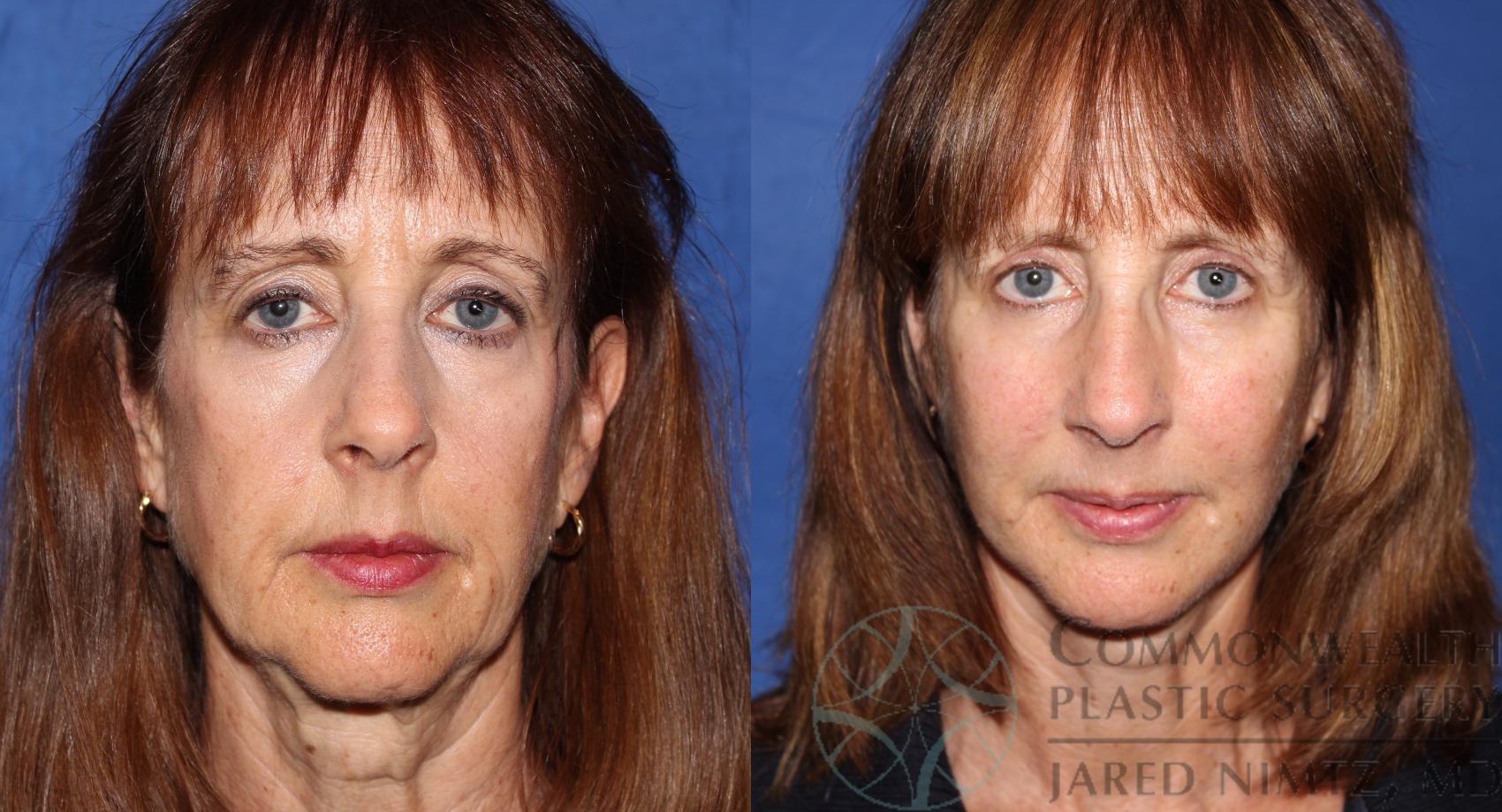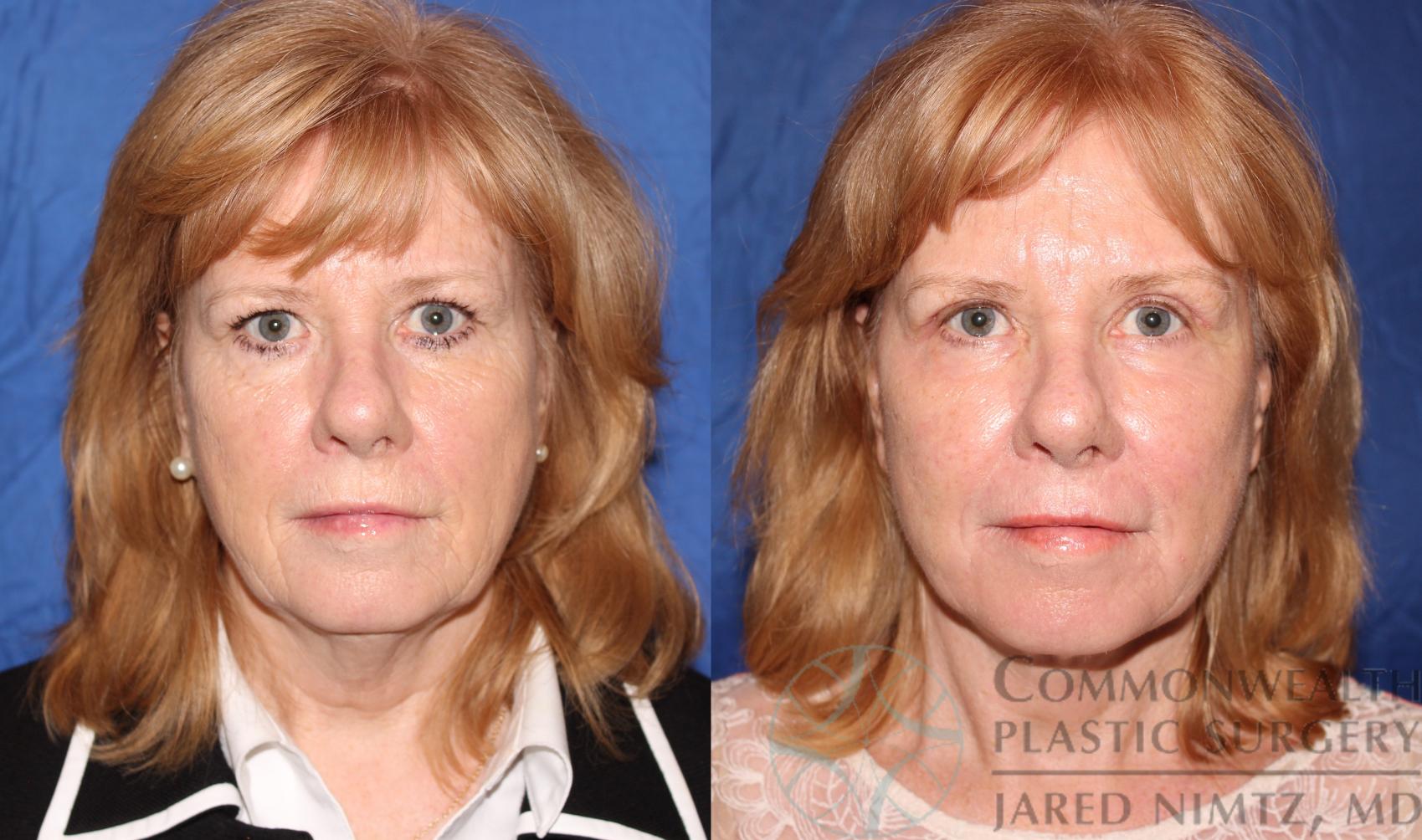Understanding what to expect during facelift recovery enables you to better prepare for your procedure and feel at ease before and after surgery. At Commonwealth Plastic Surgery, we believe the healing process is a very important part of your surgical journey.
Whether you’re wondering how long recovery will take or searching for ways to speed up the facelift healing process, we’ve got you covered. Here are some tips to help you set realistic expectations and guide you through recovery from your facelift.
1. Give Yourself Plenty of Time To Heal
How long is recovery from a facelift? The answer depends on the type of procedure you’ve had. Typically, patients take about 2 weeks to recover, although some notice improvements sooner. During this period, you’ll want to rest and avoid strenuous activities. Mini facelifts often require less recovery time, while full facelifts may need a few extra days. Most people feel comfortable resuming their normal social activities around week two or three when swelling and bruising have significantly subsided.
Learn more about the different types of facelifts.
2. Elevate Your Head To Reduce Swelling
To promote healing and minimize swelling during post-op facelift recovery, it’s important to keep your head elevated at all times. Sleeping in a recliner or propped up with pillows during the first few days will help reduce inflammation and speed up the recovery process. Elevation also assists in preventing unnecessary pressure on your face, which is crucial during the facelift healing stages.
3. Follow Post-Op Instructions Carefully
Dr. Nimtz will provide detailed instructions following your procedure. These guidelines may include information on how to care for your incisions, when to resume normal activities, and what to avoid.
4. Stay Hydrated and Nourished
Proper hydration and nutrition play an important role in the facelift healing process. Your body needs extra support to recover from surgery, so be sure to drink plenty of water and focus on a balanced diet rich in vitamins and minerals. Foods that are high in protein, antioxidants, and healthy fats can promote healing and reduce inflammation. Avoid salty or processed foods, which can contribute to bloating and swelling.
5. Keep Moving, but Take It Easy
While rest is critical during the first few weeks, non-strenuous movement can help prevent blood clots and improve circulation. After the initial healing stages, it’s important to gently stretch and take short walks around your home. You’ll likely be cleared to return to exercise around weeks 3 or 4 when the facelift post-op swelling and bruising have mostly subsided.
6. Use Camouflage Makeup for Bruising
As you progress through the facelift healing stages, you may notice some lingering bruising or swelling. Makeup can be a helpful tool during this time to camouflage any discoloration as you transition back into your daily routine, but always follow your surgeon’s advice. Choose products that are gentle on your skin and avoid applying pressure to the healing areas.
7. Be Patient
While many patients start seeing improvements within the first few weeks, it can take several months for all swelling to completely subside and for scars to mature. Patience is essential, as your final results will reveal themselves gradually. As your incisions heal, scars will flatten, soften, and eventually fade over time. This process can take up to a year, but proper care can help speed up the fading process.
Take the Next Step
If want to learn more about facelift recovery or have additional questions, we encourage you to contact us. Get in touch by requesting a consultation using the online form or by calling us at (859) 277-9435.







Leave a Reply